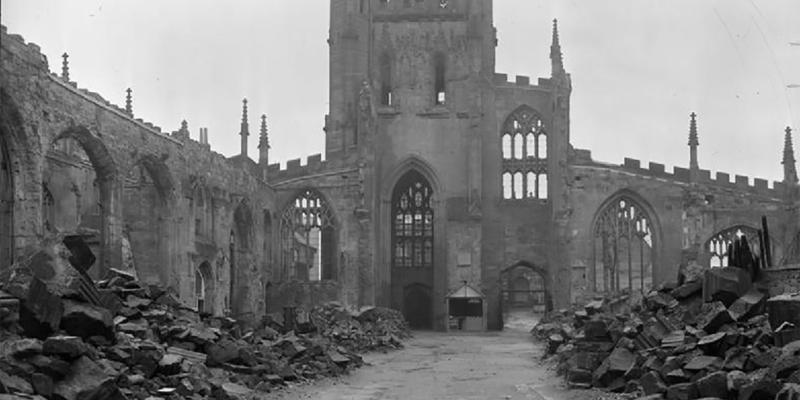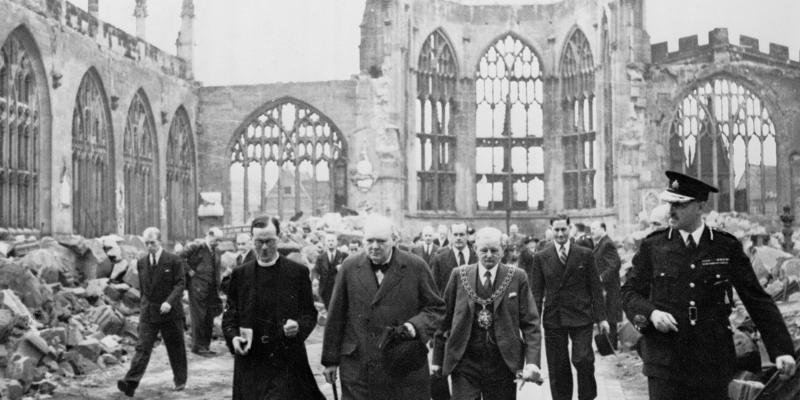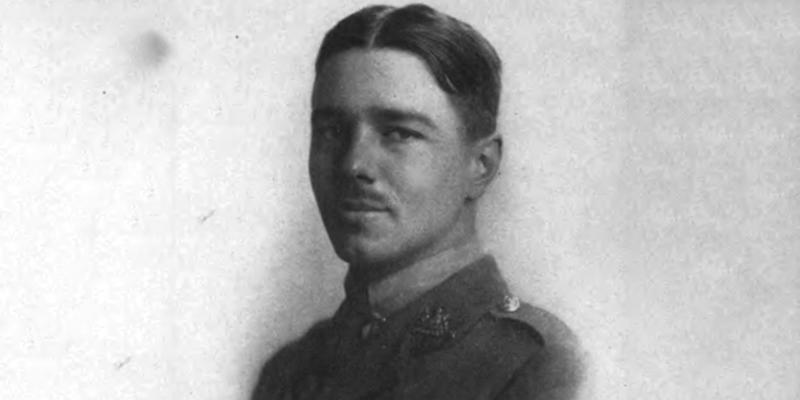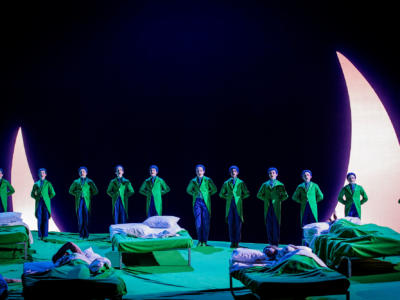An Act of Reparation: the story behind Britten’s War Requiem
In War Requiem Benjamin Britten incorporated settings of the First World War poet Wilfred Owen (1893–1918), whom he once described as ‘by far our greatest war poet, and one of the most original poets of the century’, within the context of the Latin Mass for the Dead.
Video
Second World War and Coventry
During the Battle of Britain in 1940, the city of Coventry was subject to concentrated mass bombings in which many civilians lost their lives and much of the city was razed to the ground. The city’s medieval cathedral was virtually destroyed.
After the war, it was decided to rebuild Coventry Cathedral to a new design by architect Basil Spence using modern materials and sited next to the shell of the original building. The spirit of the enterprise was one of reconciliation after conflict, reflected in the shell of the former cathedral remaining as a stark reminder of the conflict.
To celebrate the cathedral’s consecration in May 1962, a showcase arts festival was planned. In keeping with the ideals behind the building itself, the Coventry Cathedral Festival was intended as an international symbolic act of reconciliation, as well as a national celebration.

A view of the roofless shell of Coventry Cathedral, looking down the aisle from the altar end towards the west tower and door. Rubble and debris are piled inside, with a wide path cleared through towards the door, 1944.
The Commission of War Requiem and its reception
It was against this background that Britten responded to an approach from the Coventry Cathedral Festival Committee for a new piece: ‘I should be very honoured to be connected with such a significant and moving occasion, and shall do my best to turn out something worthy of it.’
The commission afforded Britten a twofold opportunity: he was able to fulfil his long-held desire to compose a large‑scale choral work appropriate for such an important symbolic occasion; and it allowed him to air in public his long-held pacifist beliefs and his faith in humanity’s capacity for compassion. In his own words, he offered War Requiem as ‘an act of reparation’.
War Requiem’s first performance was on 30 May 1962 in Coventry Cathedral. The reception of the piece became rather more than its creator originally bargained for: it soon took on the mantle of a public statement of outrage against war, conflict and violence, sentiments that were only intensified in 1964 with the 50th anniversary of the outbreak of the First World War and the growing international discomfort with the atrocities unfolding in Vietnam.

Winston Churchill walking through the ruined nave of Coventry Cathedral, England, after it was severely damaged in the Coventry Blitz of 14–15th November 1940.
Structure of War Requiem: the vocals
In War Requiem, the combination of the Mass for the Dead and Owen’s poetry is played out on three levels.
- Two soldiers, a tenor and a baritone, sing Owen’s poems to the accompaniment of a chamber orchestra of 12 instruments, to represent the experience of individuals caught up in conflict.
- The soprano soloist, large chorus and full orchestra represent formal grief, and are confined to the ‘official’, liturgical text of established religion.
- The ethereal sound of children’s voices and chamber organ, whose innocent, pure sonorities set them apart from human experience.
Structure of War Requiem: the framework
Within the three-level framework Britten explores and exploits the inherent contrasts and ironies, often using Owen’s poetry to undercut the orthodox sentiments expressed in the Latin text. This is powerfully demonstrated in the Offertorium with its juxtaposition of the ‘Quam olim Abrahae promisisti’ and Owen’s Parable of the Old Man and the Young. Britten’s self-quotation from his Canticle II: Abraham and Isaac (1952), a setting of the medieval mystery play on the same biblical story, adds to the richness of the irony. In the Bible story Abraham follows God’s command and spares his son Isaac, in Owen’s poem he slays Isaac and, as Owen says, ‘half the seed of Europe, one by one’.

Portrait of Wilfred Owen, found in a collection of his poems from 1920.
Structure of War Requiem: the music
The musical language of War Requiem is relatively straightforward – Britten was, after all, appealing to a mass audience – yet at the same time avoids the merely commonplace or banal.
The musical structure is at once economical and sophisticated, with easily recognisable motifs and direct orchestration. In contrast to the Latin Mass, the Owen settings are as musically sophisticated as anything found in Britten’s orchestral song-cycles or chamber operas, and can be regarded as a song-cycle embedded within the ritual of the Mass. It was certainly an inspired and highly personal idea.
It remains a curious irony in War Requiem that the idea of rest is accompanied by the tritone (C–F sharp) heard on the bells at the outset of the Requiem aeternam (‘Rest eternal, grant them, O Lord’). Since medieval times this musical interval has been known as the diabolus in musica (‘the devil in music’). Britten taps both its extra-musical associations and uniquely disturbing tonal ambiguity throughout.
The only occasion the interval’s tension is fully resolved occurs at the end of the hauntingly beautiful Agnus Dei (‘Lamb of God’). This is the moment of truth in the piece. Owen’s ‘At a Calvary near the Ancre’ and the Latin words of the Agnus Dei run concurrently, ending with the tenor’s rising phrase in which is made the most explicit plea for peace in the whole work: ‘Dona nobis pacem’.
That we might feel uneasy at the end of War Requiem is because of the reappearance of the hollow tritone, once again intoned by the bells. As Peter Pears, Britten’s partner and leading interpreter, remarked: ‘It isn’t the end, we haven’t escaped, we must still think about it, we are not allowed to end in a peaceful dream.’ A sobering and disturbing thought in a world that still needs its War Requiems and our poets to warn us.
Video



